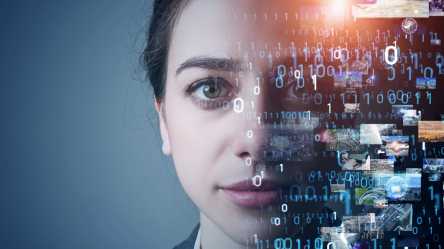
While the concept of AI is not new, the rise of generative AI (genAI) tools like Chat GPT has put a spotlight on AI’s capabilities and attracted the attention of business leaders. According to Foundry’s CIO Tech Priorities 2023, 57% of organisations surveyed are actively researching or already piloting AI and machine learning technologies, with 15% having implemented AI and ML in their workflow. It has also been reported that spending on AI in the Middle East and Africa will reach a total of US$6.4 billion by 2026.
But as organisations look to leverage AI for monetisation and business growth, it’s important to acknowledge the larger impact that can be derived through AI, especially with the deadline to the United Nations Sustainable Development Goals drawing near.
Let’s examine the economic, social, and environmental impact that AI has delivered—or has the potential to—using different industries to illustrate some concrete use-cases.
The economic impact of AI
In transportation and logistics, AI and ML are used to drive forward Smart City initiatives. Automakers are developing semi-autonomous vehicles; in fact, fully autonomous vehicles like buses and taxis already operate as part of daily life in some countries. The Sino-Singapore Tianjin Eco-City project is one example, with the introduction of autonomous transportation like the self-driving bus and enhanced smart traffic control.
Similarly, the UAE is arguably one of the most advanced when it comes to staying ahead of emerging technology. The TXAI, a robotaxi initiative launched on the Yas Island of Abu Dhabi, demonstrates the way the country is advancing its transportation ecosystem with autonomous vehicles.
In oil and gas, a lot of effort is put into tackling the climate change crisis. Many organisations in the industry are already aiming to transition into diversified, net zero energy companies: according to IDC, 40% of oil and gas companies (hyperlink to white paper) will be using predictive AI to simulate technologies that can estimate and reduce emissions by half in 2026. GenAI can also be leveraged in downstream operations, to analyse and identify patterns based on geological and geophysical data to identify locations of oil and gas deposits.
Delivering societal and environmental impact with AI
The recent pandemic will always be remembered as the deadliest in modern history. But more than that, it has changed the world in ways we had never imagined to be possible in such a short time span. The healthcare industry in particular, is fast leveraging technology and AI post-pandemic to improve patient care by developing ways to ensure the most efficient means to attend to patients and get them treated within a shorter time frame.
From using AI to support patient diagnosis to studying the efficacy of new drugs, hospital processes, and even improving the patient-doctor experience, AI is truly advancing healthcare in unprecedented ways. According to IDC Futurescape: Worldwide Healthcare Industry 2023, by 2027, “70% of healthcare organisations will rely on digital-first strategies, interoperable workflows, and consumer data platforms to empower patients, elevate experiences, and champion trust.”
In sports, big data, analytics, and AI are delivering better viewing experiences, even giving fans an immersive experience from the comfort of their homes. Whether its advanced analytics, player tracking, or supporting injury detection and protection for players, AI can elevate the sporting experience and bring communities closer in support of one another.
The examples highlighted are just the tip of the iceberg on how AI can elevate industries to the next level in creating a promising future for the generations to come. But for a truly transformative world driven by AI, industry players will need to get onboard the same altruistic mission and evolve the industry ecosystem as a whole. This means breaking out of industry silos and being more open to sharing data, applications, and operations, even industry expertise. Collaboratively, we can solve challenges that were once unthinkable to shape a better tomorrow.
For more, read the AI for Social, Economic and Environmental Good report here.









